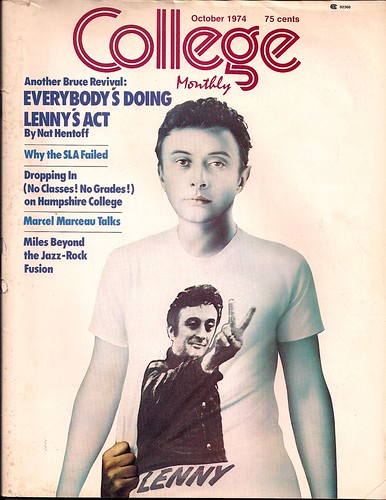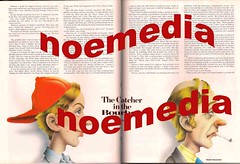
I was there too, at Newport '65. My buddy Jerry Seidenfeld is sleeping it off on a cot on page 20 of Dave Gahr's "Festival Songbook" (a whole drawerful of Dylan prints Dave gave me were stolen from my garage in Santa Monica years later.)
True dat about the crowd reaction. From where I was standing (in the rear) I thought they were all yelling, "Down in front!"
To quote Dylan, "There was magic in the air."
This is my reaction to a post about Bob Dylan at Newport, 1965:
http://carnivalsaloon.blogspot.com/2010/02/bob-dylan-at-newport-1965.html"... I've just finished reading White Bicycles, Joe Boyd's excellent memoir of the 60s ("I was there, I do remember"). The record producer and self-proclaimed éminence grise was one of the organisers of the infamous 1965 Newport Fok Festival when Bob Dylan plugged in and blew dust from the ears of thousands of folkies ...
... My favourite anecdote is when Dylan returned to play two acoustic songs after pissing off the folk faithful with the Butterfield Blues Band. He asked the audience, "Has anyone have an E harmonica? Anyone? An E harmonica?" As Boyd writes, "Only at Newport would this request be followed by a shower of half a dozen harmonicas on to the stage". You can hear them all thud in this clip:
http://www.youtube.com/watch?v=bvrlniDO5oo ... Boyd puts forward a good argument that this was rock's Year Zero. "Some loved it, some hated it, most were amazed, astonished and energized by it. It was something we take for granted now, but utterly novel then: non-linear lyrics, an attitude of total contempt fot expectation and established values, accompanied by screaming blues guitar and a powerful rhythm section, played at ear-splitting volume by young kids. The Beatles were still singing love songs in 1965 while the Stones played a brand of blues-rooted pop. This was different. This was the Birth of Rock."
If Joe Boyd is correct then this was arguably the most important gig in music history.
wikipedia: In the summer of 1965, as the headliner at the Newport Folk Festival, Dylan performed his first electric set since his high school days with a pickup group drawn mostly from the Paul Butterfield Blues Band, featuring Mike Bloomfield (guitar), Sam Lay (drums) and Jerome Arnold (bass), plus Al Kooper (organ) and Barry Goldberg (piano). Dylan had appeared at Newport in 1963 and 1964, but in 1965 Dylan, met with a mix of cheering and booing, left the stage after only three songs. As one version of the legend has it, the boos were from the outraged folk fans whom Dylan had alienated by appearing, unexpectedly, with an electric guitar. An alternative account claims audience members were merely upset by poor sound quality and a surprisingly short set.
2-6-10:
From that original post by Nigel Smith:
Laurence J. said ...
I was there...rode up on a '64 BSA 650 Lightning...other electric acts performed without problem - Howlin' Wolf, for example - and really, the crowd reaction wasn't negative: just as many cheers as boos. The Forest Hills concert about a month later was a real riot; fans rushing the stage, fights breaking out in the audience.
At Newport the sound was the real problem (and Jerome Arnold missing a change in "Maggie's Farm"). ...
________________
On a personal note re Newport '65: The performance by Mel Lyman at a harmonica workshop was where I miraculously learned how to play harmonica. From that day on, it all fell into place and I became the virtuoso that I am today. If you google Mel you will find some Rolling Stone articles about his leading a cult. Well, he did have some powers.




